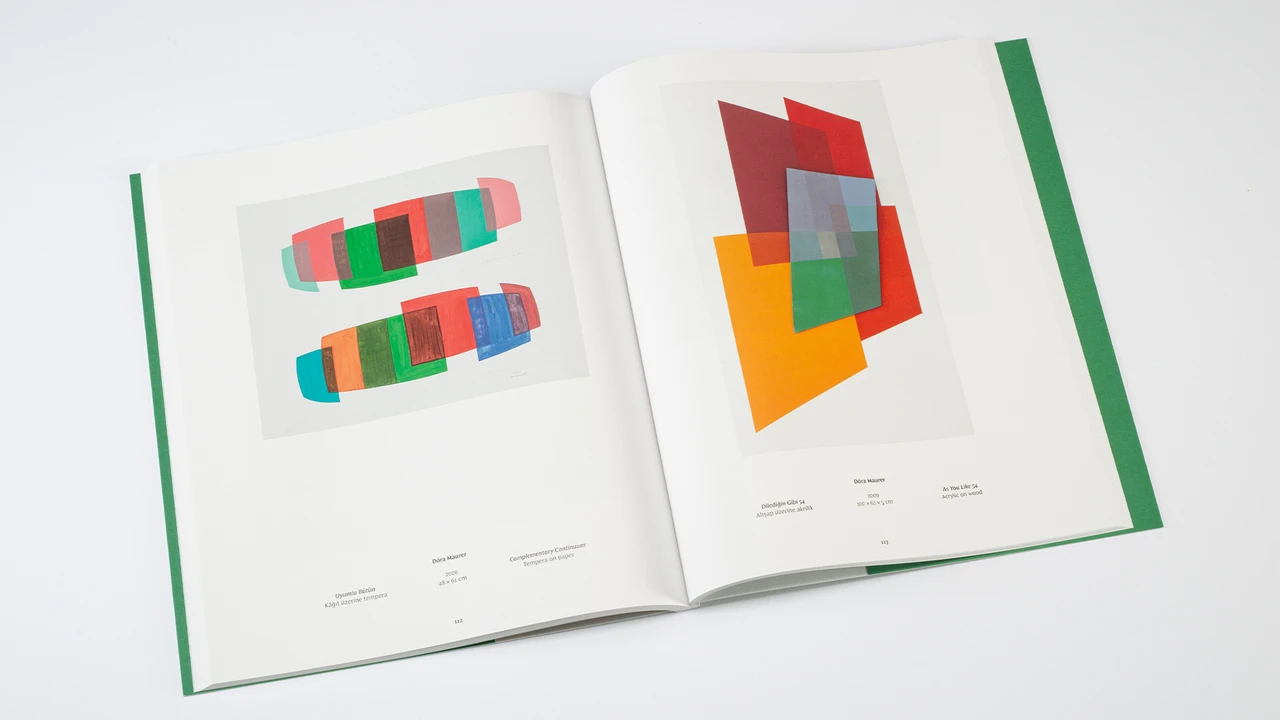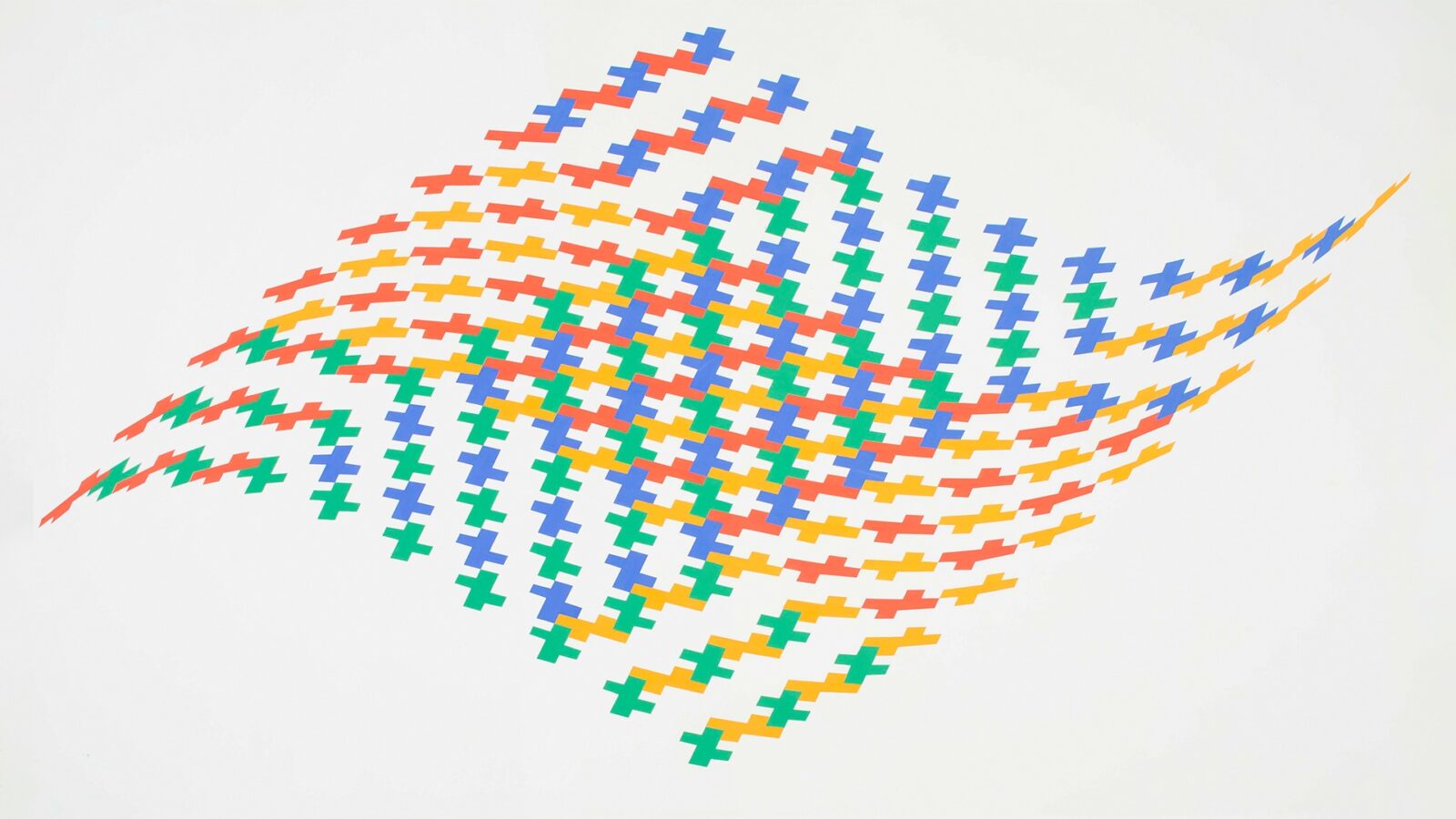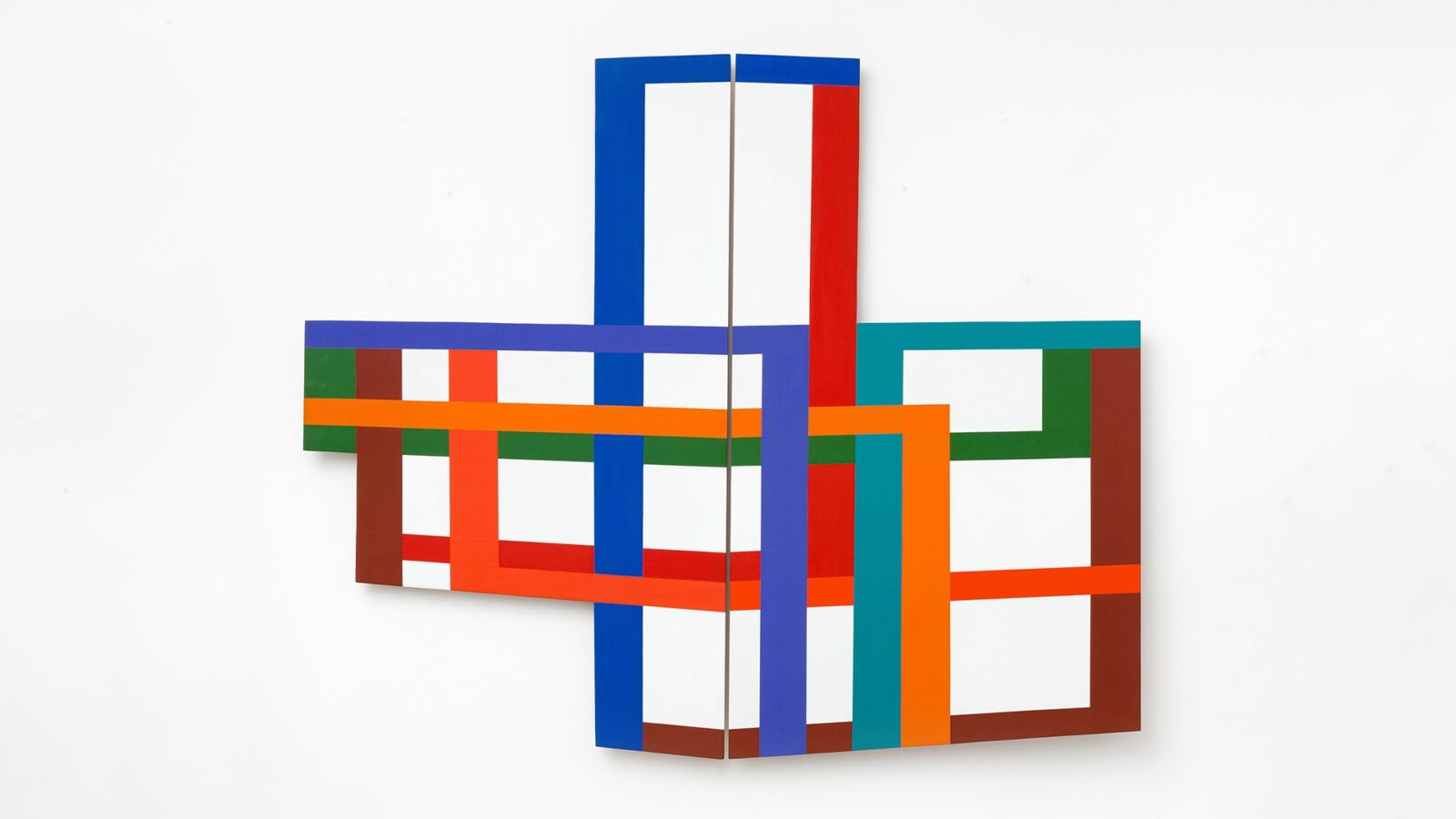Istanbul Pera Museum hosts exhibition featuring pioneering algorithmic art
 A spread from the exhibition catalog featuring Dora Maurer’s works, including "Complementary Continuum" (2000) and "As You Like 54" (2009). (Photo by Istanbul Pera Museum)
A spread from the exhibition catalog featuring Dora Maurer’s works, including "Complementary Continuum" (2000) and "As You Like 54" (2009). (Photo by Istanbul Pera Museum)
Istanbul Pera Museum is hosting the “Calculations and Coincidences” exhibition, which brings together the works of three trailblazers in algorithmic art: Vera Molnar, Dora Maurer and Gizella Rakoczy.
The exhibition runs until January 26, 2025, as part of the 2024 Hungarian-Turkish Cultural Year, and explores the deep connection between art, nature and mathematics.

Vera Molnar’s groundbreaking use of computers in art exhibited in Istanbul Pera Museum
Vera Molnar, one of the first artists to use computers in creating artwork, started her journey in 1968. She developed her technique by integrating what she called “machine imaginaire” before moving on to real computer-generated art.
Molnar introduced a unique element of “1% disorder” into her structured works, balancing precision with intentional randomness.
She once said: “I love order, but I cannot stand it,” reflecting her deliberate disruptions in otherwise precise designs.
Molnar’s work in the exhibition features digital and geometric pieces that emphasize the role of technology in expanding the boundaries of algorithmic art.

Dora Maurer, Gizella Rakoczy’s exploration of geometry, sequences in algorithmic art
Dora Maurer has focused her career on transforming chaotic forms into orderly compositions. Her work reflects a strong interest in mathematical sequences and geometric patterns. She described her approach as “creating a model situation where multiple elements interact using a proper guideline of order.”
Maurer’s pieces in the exhibition include paintings and films that illustrate her meticulous approach to art and mathematics, contributing significantly to the field of algorithmic art.
Gizella Rakoczy investigated the behavior of spirals and the Fibonacci sequence in her geometric artworks. Starting in 1976, she explored the possibilities of four-armed spirals using combinatorics.
Later, she applied the Fibonacci sequence to create layered watercolor paintings. Her piece “4 Tones of 4 Colours” demonstrates how she achieved aesthetic results through systematic arrangements. Rakoczy’s work reflects her consistent and structure-focused approach to algorithmic art.

Exploring impact of Vera Molnar’s legacy on contemporary artists
The exhibition includes a parallel show, “In the Footsteps of Vera Molnar,” which features 16 artists inspired by Molnar’s work. Among them is Turkish media artist Refik Anadol, who integrates contemporary digital techniques with Molnar’s pioneering methods.
This part of the exhibition allows visitors to engage with interactive art through virtual reality installations, showing the lasting influence of Molnar’s groundbreaking techniques.



